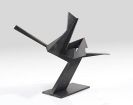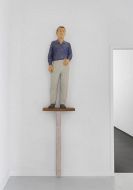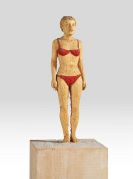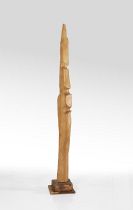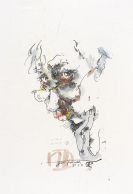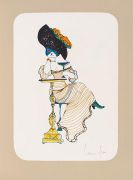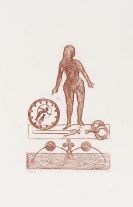
Jean Robert Ipoustéguy
Dun-sur-Meuse
1920
Ipoustéguy was born as Jean Robert at Dun-sur-Meuse on 6 January 1920. From 1938 Ipoustéguy attended evening classes in painting and drawing taught by Robert Lesbounit in Paris. After serving in the military during the second world war, Ipoustéguy tried to earn his livelihood by painting and did frescoes and stained-glass windows for St Jacques in Montrouge in 1947-48.
Since Robert was such a common surname, Jean Robert assumed his mother's maiden name as his nom d'artiste: Ipoustéguy. In 1949 Ipoustéguy moved to Choisy-le-Roi and began to work on sculpture. In 1953 he abandoned oil painting for drawing, watercolour, sculpture and writing.
After an abstract phase, Ipoustéguy concentrated primarily on the human figure.Ipoustéguy was inspired by Surrealism - social themes as well as erotic motifs and the theme of death continued to be his chief preoccupation.
He was awarded the Bright Prize at the 1964 Venice Biennale and this distinction was followed by others at other exhibitions. Ipoustéguy showed work at "documenta" in Kassel in 1964 and 1977. In 1967 Ipoustéguy worked at the Carrara marble quarries.
Ipoustéguy saw his largest sculpture, "L'homme construit sa ville", set up in front of the Congress Centre in Berlin in 1979. It is his monumental work, however, that has given rise to objections from religious and political groups. Despite being controversial, examples of it have been set up in French embassies.
In 1977 Ipoustéguy was awarded the Grand National Prize for art and made a chevalier de la Légion d'honneur in 1984. Some of Ipoustéguy's work is exhibited in his native Dun while his sculpture is owned by museums world-wide.
Ipoustéguy writes and works on sculpture in Choisy-le-Roi, France.
Would you like to sell a work by Jean Robert Ipoustéguy?
Infos for seller
